Vintage Tribal Kilim Runner 3' 1" x 10' 7" (37" x 127")
Type:
Kilim RugsCollection:
Tribal RunnersID:
K0077124Size:
Material:
The designs feature a rich array of symbols representing tribal culture and Anatolian motifs, often in the form of medallions, diamonds, and other geometric shapes.
The designs feature a rich array of symbols representing tribal culture and Anatolian motifs, often in the form of medallions, diamonds, and other geometric shapes. These kilim runners are ideal for hallways and narrow spaces, offering a touch of ethnic charm and artisanal quality to any interior.
Herki kilims not only serve as functional floor coverings but also as artistic expressions of tribal identity, making each rug a unique cultural artifact.
Design Elements
- Shape and Layout: The kilim runner displays a long rectangular shape, reflecting its purpose as a floor covering along hallways or corridors.
- Pattern: It features a repeating geometric pattern composed of symmetrical arrangements. This creates a sense of rhythm and continuity across the length of the runner.
- Motifs: The motifs include diamonds, stars, and stylized floral shapes. Each of these shapes contributes to the overall aesthetic while carrying specific cultural meanings.
- Texture: The flat-woven technique of kilim weaving gives the piece a smooth texture. This not only enhances its function but also showcases the craftsmanship involved.
- Borders: The design is framed by a distinct border that employs a contrasting color, effectively framing the central motifs and adding definition to the overall piece.
Colors
- Main Color - Orange: The vibrant orange dominate the background, symbolizing warmth, energy, and happiness. This vivid hue evokes feelings of enthusiasm and excitement.
- Accent Colors: The kilim features an array of pink, red, white, and brown.
- Pink and Red: Both colors signify love and passion. They create a lively contrast against the orange background.
- White: This color represents purity and simplicity, softening the boldness of the other colors.
- Brown: Often used to define patterns, brown adds depth and enhances the visual complexity of the design.
Meaning of Main Motifs and Symbolism
- Diamonds: Symbolize wealth and prosperity. Their multiple sides represent life's different paths and the choices one may encounter.
- Stars: Often viewed as symbols of hope and guidance, stars in tribal art connect with celestial themes, representing navigation and purpose.
- Floral Shapes: These motifs represent nature and fertility. They serve as a reminder of growth and the beauty found in organic life.
- Geometric Twists: These forms connect deeply with cultural heritage, often embodying the dynamics of community and tradition through interwoven designs.
Summary
The vintage tribal kilim runner presents a rich tapestry of colors and design elements that combine to create an impactful visual experience. With its vibrant orange backdrop augmented by alternating motifs of diamonds, stars, and floral shapes, the runner embodies themes of warmth, wealth, and nature. The use of intricate geometric patterns and an array of colors not only highlights its artistic value but also conveys deeper meanings rooted in cultural symbolism.
- Ships in 1-4 business days
- Only one in stock, handmade, unique
- Free shipping via FedEx Express. Easy returns
- Contact us or add a note to your order if you want us to delay your shipping.
- Request more info if you want this rug shorter or narrower
Colors may appear slightly different across various monitors due to screen settings device differences, and external lighting conditions. If color accuracy is important for your space, we recommend viewing the rug on multiple devices or contacting us for a detailed color description. We can provide detailed photos and references using Sherwin-Williams, Benjamin Moore, Pantone, or even Crayola crayons.
You can also visualize most of our products in your own room with AR (augmented reality) on an iPhone or iPad.
Return Policy
Need a rug pad? We recommend RugPadUSA
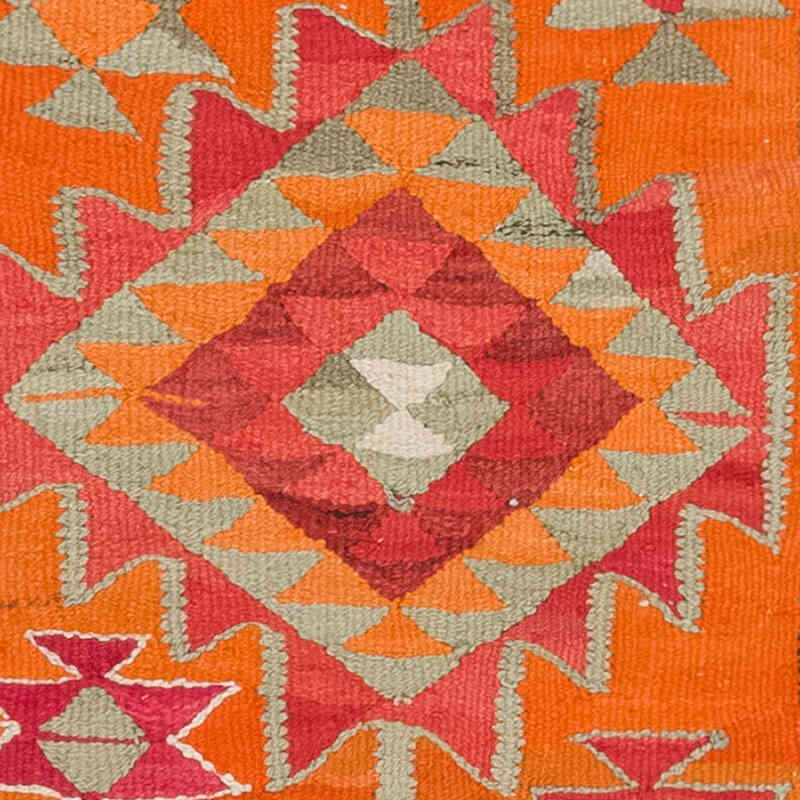
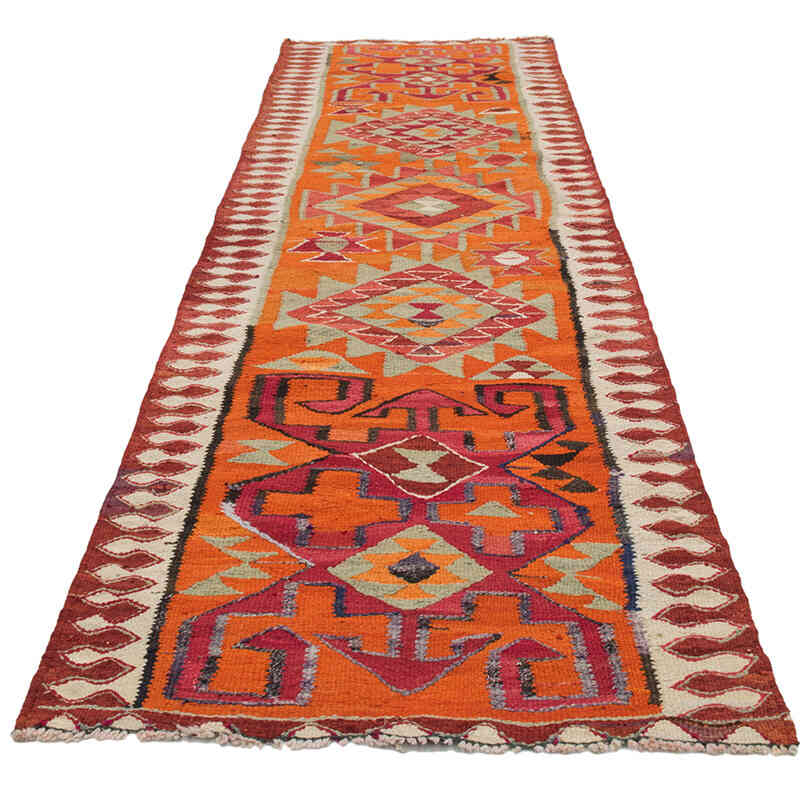
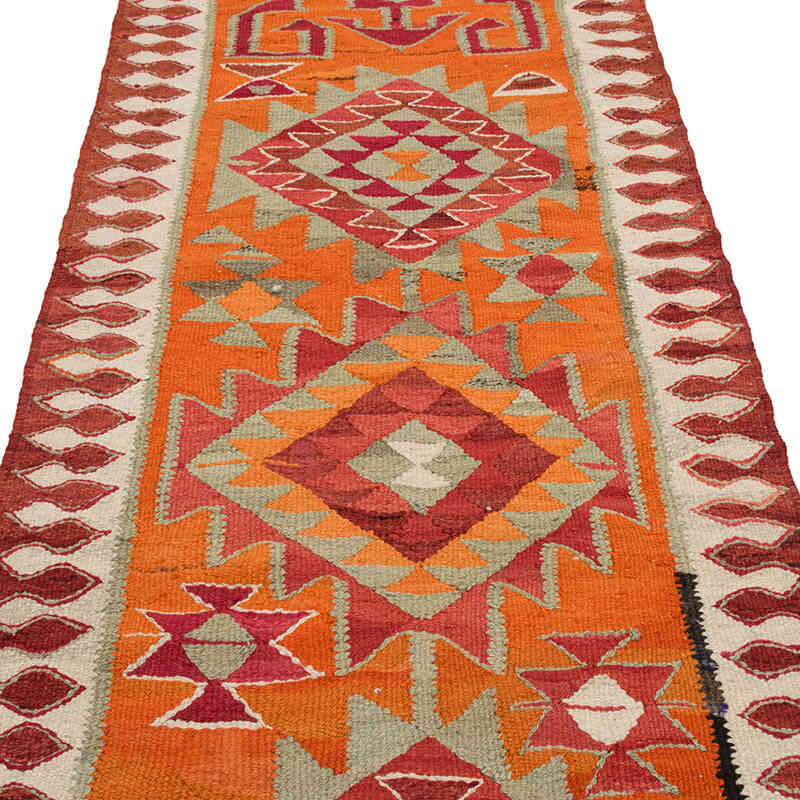
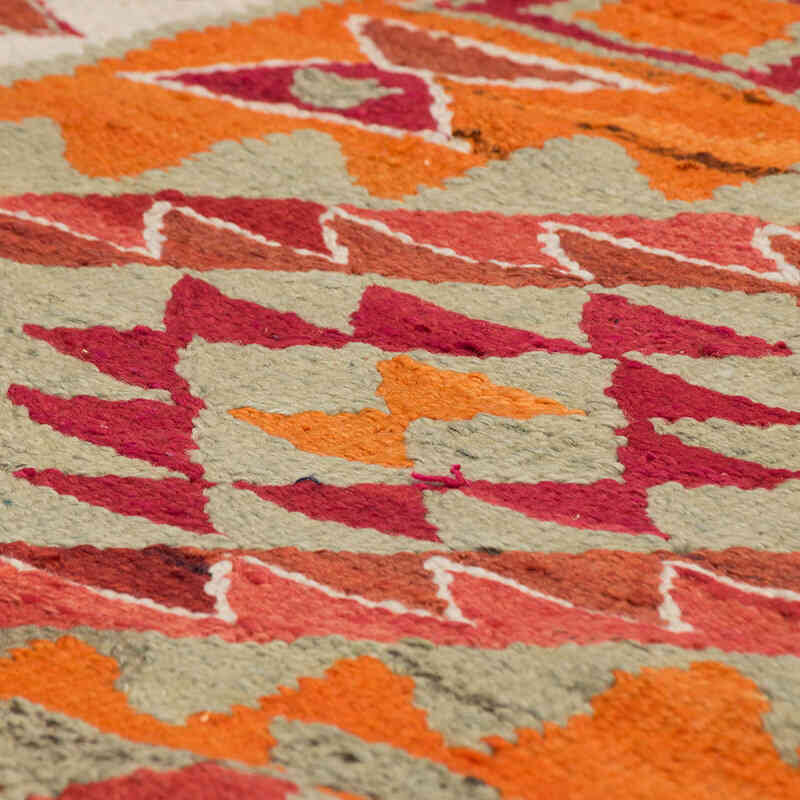
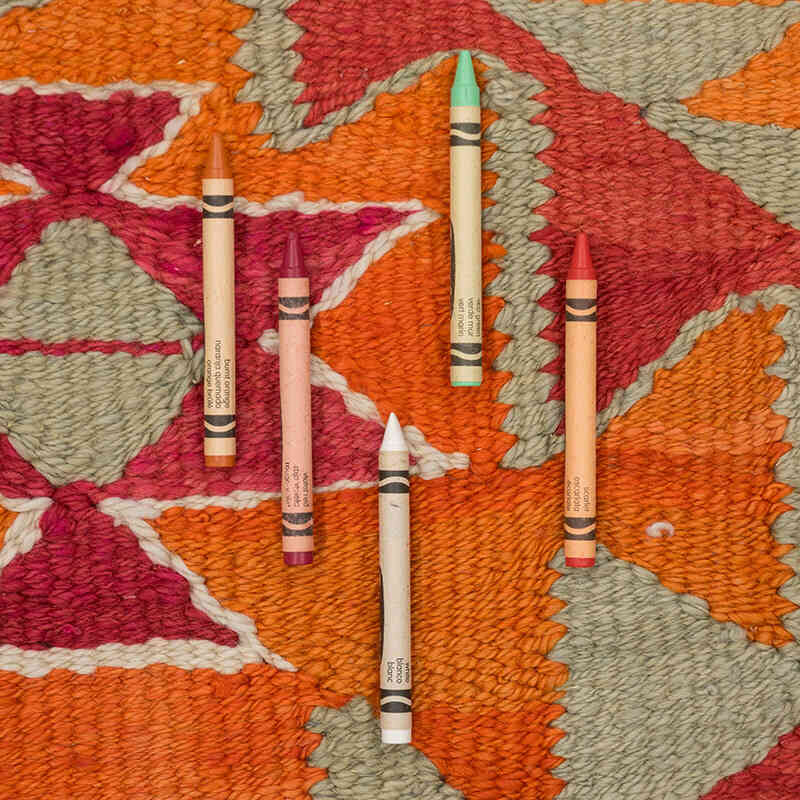
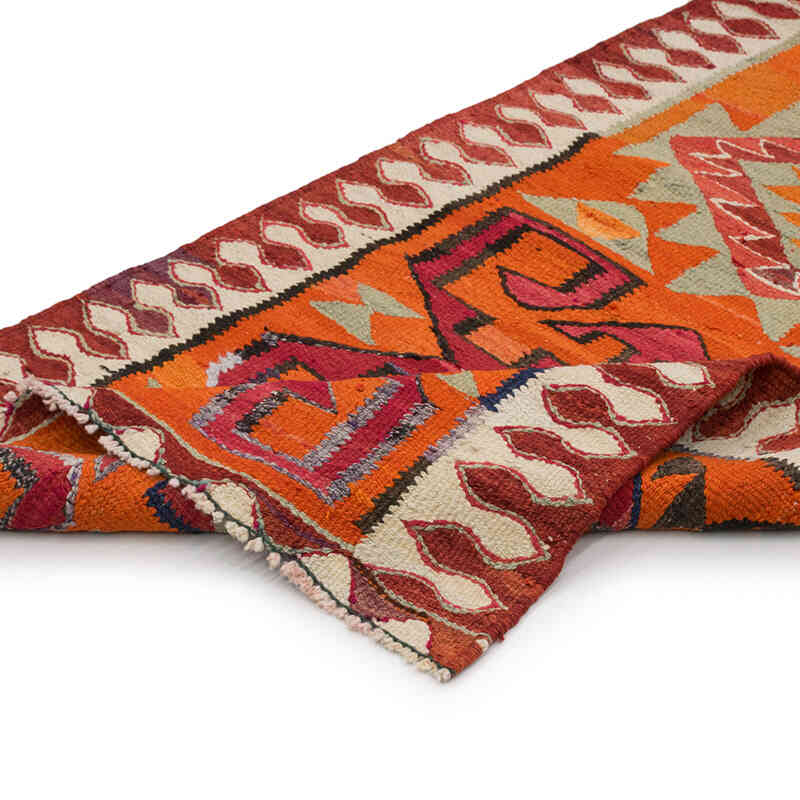
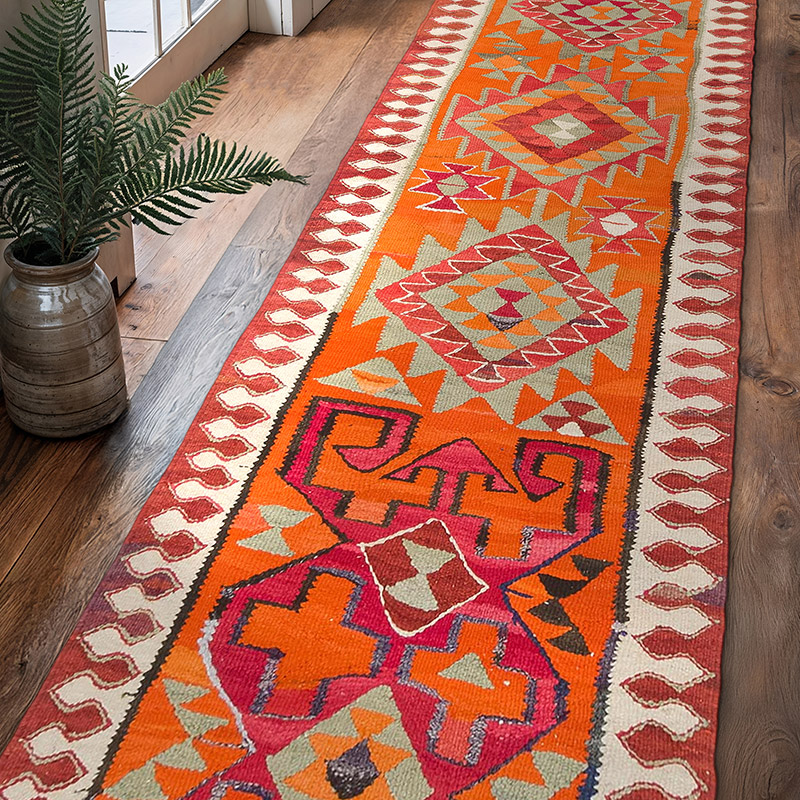









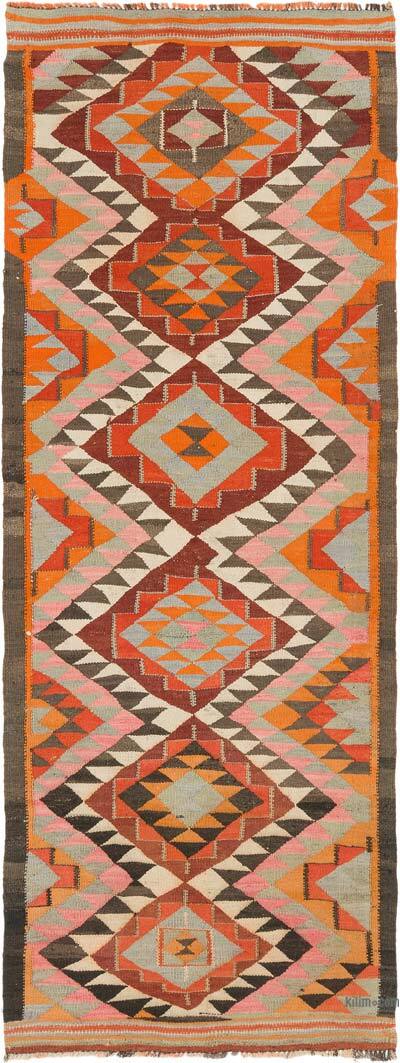






So happy with my kilim rug